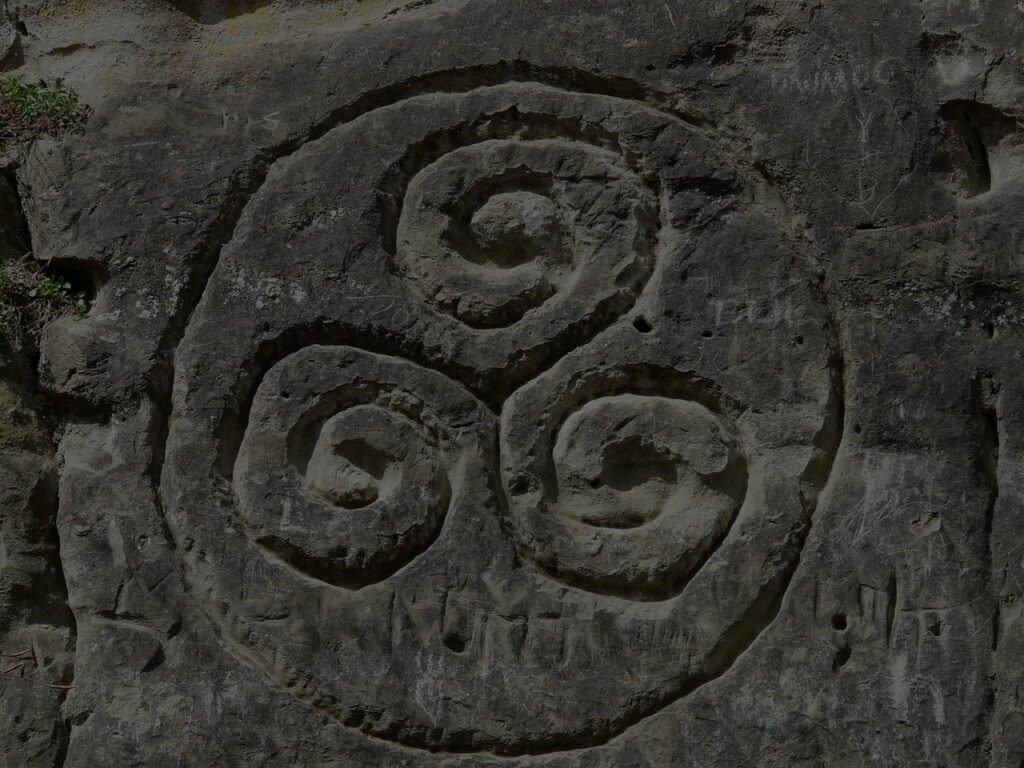Dream of A Sunday Afternoon in Alameda Park by Diego Rivera is a captivating piece of artwork that has garnered widespread attention for its intricate details and hidden meanings. The painting, which depicts a vibrant scene in a park with various people engaging in leisurely activities, is filled with rich symbolism that delves into themes of social class, nature, and culture.
At first glance, the painting appear to be a simple snapshot of a park on a sunny afternoon. However, upon closer inspection, viewers can uncover deeper layers of meaning that Rivera embedded within the piece. The juxtaposition of different social classes, the blending of urban and natural elements, and the inclusion of various cultural symbols all contribute to the overall message of the painting.
Through his use of symbolism and attention to detail, Rivera invites viewers to contemplate the complexities of society and human relationships. Dream of A Sunday Afternoon in Alameda Park serves as a powerful commentary on the interconnectedness of all individuals and the importance of unity in diversity.
Dream Of A Sunday Afternoon In Alameda Park Analysis Symbolism
Diego Rivera’s mural Dream of a Sunday Afternoon in Alameda Park is filled with rich symbolism that reflects the artist’s perspective on Mexican history and culture. The mural depicts a gathering of historical and mythological figures, as well as everyday people, in Alameda Park in Mexico City.
One of the main symbols in the mural is the figure of Catrina, a skeleton wearing an elegant hat and dress. Catrina is a representation of death in Mexican culture and is often associated with Dia de los Muertos (Day of the Dead). In dreams, death can symbolize a transformation or rebirth, indicating the end of one phase of life and the beginning of another. The presence of Catrina in the mural suggests a contemplation of mortality and the cyclical nature of life.
Another important symbol in the mural is the figure of La Malinche, a historical figure who acted as an interpreter and advisor to Spanish conquistador Hernan Cortes. La Malinche is a controversial figure in Mexican history, viewed by some as a traitor and by others as a victim of circumstances. In dreams, La Malinche symbolize conflicting loyalties or a sense of betrayal. Her inclusion in the mural reflects Rivera’s critique of the impact of colonization on Mexican society.
The figure of Quetzalcoatl, the feathered serpent god of Mesoamerican mythology, is also present in the mural. Quetzalcoatl represents wisdom, creativity, and the cycle of life, death, and rebirth. In dreams, Quetzalcoatl symbolize spiritual growth and transformation. His presence in the mural suggests a connection to Mexico’s indigenous heritage and the importance of preserving traditional beliefs and customs.
The mural also includes references to Mexican history, such as the figure of Benito Juarez, a 19th-century president known for his liberal reforms. Juarez symbolizes democracy, equality, and justice. In dreams, Juarez represent ideals of fairness and social progress. His presence in the mural reflects Rivera’s commitment to social justice and his belief in the power of art to inspire positive change.
Overall, the symbols in Dream of a Sunday Afternoon in Alameda Park reflect Rivera’s vision of a vibrant and diverse Mexican society, rich in history and culture. The mural invites viewers to contemplate themes of life and death, colonization and resistance, tradition and progress. By drawing on psychology, mythology, and cultural beliefs, we can better understand the significance of these symbols in dreams and their impact on our subconscious minds. Rivera’s mural serves as a powerful reminder of the power of art to provoke thought, spark debate, and inspire action.
Dream Of A Sunday Afternoon In Alameda Park Analysis Interpretation
Dream Of A Sunday Afternoon In Alameda Park is a rich and vivid dream that invites interpretation on multiple levels. The dream content, featuring a bustling park setting with a mix of historical and contemporary figures, suggests a blending of past and present influences in the dreamer’s psyche. This fusion of different time periods symbolize the dreamer’s complex inner world, where past experiences and present realities coexist and intermingle.
The themes of leisure, social interaction, and cultural diversity in the dream point to a desire for connection and community in the dreamer’s waking life. The park setting, with its vibrant atmosphere and diverse cast of characters, reflects the dreamer’s yearning for engagement with others and a sense of belonging in a larger social context.
The emotions conveyed in the dream, such as joy, curiosity, and wonder, indicate a positive and open-minded attitude towards exploring new experiences and encountering different perspectives. The dreamer’s actions in the dream, such as exploring the park and interacting with the various individuals present, suggest a willingness to engage with unfamiliar situations and embrace diversity in all its forms.
The significance of the dreamer’s surroundings, including the historical references and cultural symbols, reflect the dreamer’s intellectual and creative interests, as well as a desire for deeper meaning and connection to the world around them. The dreamer’s engagement with these elements in the dream indicate a search for identity, meaning, and purpose in their waking life.
Drawing on psychological principles, the dream of A Sunday Afternoon In Alameda Park be seen as a reflection of the dreamer’s inner world and their quest for self-discovery and personal growth. The dream serve as a reminder to the dreamer to embrace their diverse experiences, explore their inner landscape, and connect with others in a spirit of openness and curiosity.
Overall, Dream Of A Sunday Afternoon In Alameda Park offers a compelling narrative that invites deeper reflection and introspection, pointing towards a journey of self-exploration, social connection, and creative expression in the dreamer’s waking life.
Dealing Tips For Dream Of A Sunday Afternoon In Alameda Park Analysis
Some common challenges related to analyzing Carlos Orozco Romero’s painting, “Dream of a Sunday Afternoon in Alameda Park,” include understanding the various symbols and references depicted in the artwork, trying to interpret the deeper meaning and significance of the different elements in the painting, and grappling with the emotional and psychological impact of the dreamlike atmosphere created by the artist.
To effectively manage these issues, it is important to conduct thorough research on the historical and cultural context of the painting, as well as the life and influences of the artist, Carlos Orozco Romero. This can provide valuable insights into the symbolism and themes present in the artwork, helping to unravel its complexity and deepen one’s understanding of its message.
Additionally, it may be helpful to engage in discussions with art historians, scholars, or fellow art enthusiasts who have studied the painting in depth. Having diverse perspectives and interpretations can shed light on different aspects of the artwork, offering new insights and avenues for analysis.
In terms of interpreting the deeper meaning of the painting, it is important to approach it with an open mind and allow oneself to be guided by the emotions and impressions it evokes. Reflecting on one’s own personal experiences, beliefs, and values can also offer a unique perspective on the artwork and its themes.
Lastly, when grappling with the emotional and psychological impact of the dreamlike atmosphere of the painting, it may be helpful to practice mindfulness techniques, such as deep breathing, meditation, or journaling. These strategies can help manage any feelings of confusion, overwhelm, or uncertainty that may arise during the analysis process.
For readers dealing with dream experiences in general, it is important to remember that dreams are a natural and normal part of the human experience. They can offer valuable insights into our subconscious thoughts, fears, desires, and emotions. By exploring and reflecting on our dreams, we can gain a deeper understanding of ourselves and our innermost desires.
It is also important to approach dreams with curiosity, openness, and a sense of wonder. Embracing the mystery and symbolism of dreams can lead to profound self-discovery and personal growth. Trusting in the wisdom and guidance of our dreams can ultimately lead us to a more fulfilling and authentic life.
FAQ For Dream Of A Sunday Afternoon In Alameda Park Analysis
1. What is the significance of the title “Dream Of A Sunday Afternoon In Alameda Park” in the analysis of the artwork?
The title of the artwork by Diego Rivera references a leisurely Sunday afternoon in a park, which symbolizes a serene and relaxed atmosphere. This setting serves as a contrast to the chaos and violence depicted in the mural, highlighting the artist’s commentary on societal issues.
2. What themes are prevalent in “Dream Of A Sunday Afternoon In Alameda Park”?
Some of the prominent themes in the artwork include the depiction of Mexican history, society, and culture, as well as the exploration of class struggles, power dynamics, and political commentary. Rivera uses symbolism and imagery to convey these themes in the mural.
3. How does Diego Rivera use symbolism in “Dream Of A Sunday Afternoon In Alameda Park”?
Rivera incorporates various symbols in the mural to convey his message, such as the figure of La Catrina representing death and the use of historical figures like Emiliano Zapata to highlight revolutionary movements. These symbols add layers of meaning to the artwork and invite viewers to interpret and reflect on its themes.
4. What is the historical context of “Dream Of A Sunday Afternoon In Alameda Park”?
The mural was created by Diego Rivera in the early 1940s during a period of post-revolutionary Mexico. Rivera was known for his social commentary and political activism, and his artworks often reflected the struggles and triumphs of the Mexican people. This specific mural was commissioned for a hotel in Mexico City and serves as a reflection of the country’s history and cultural identity.
















